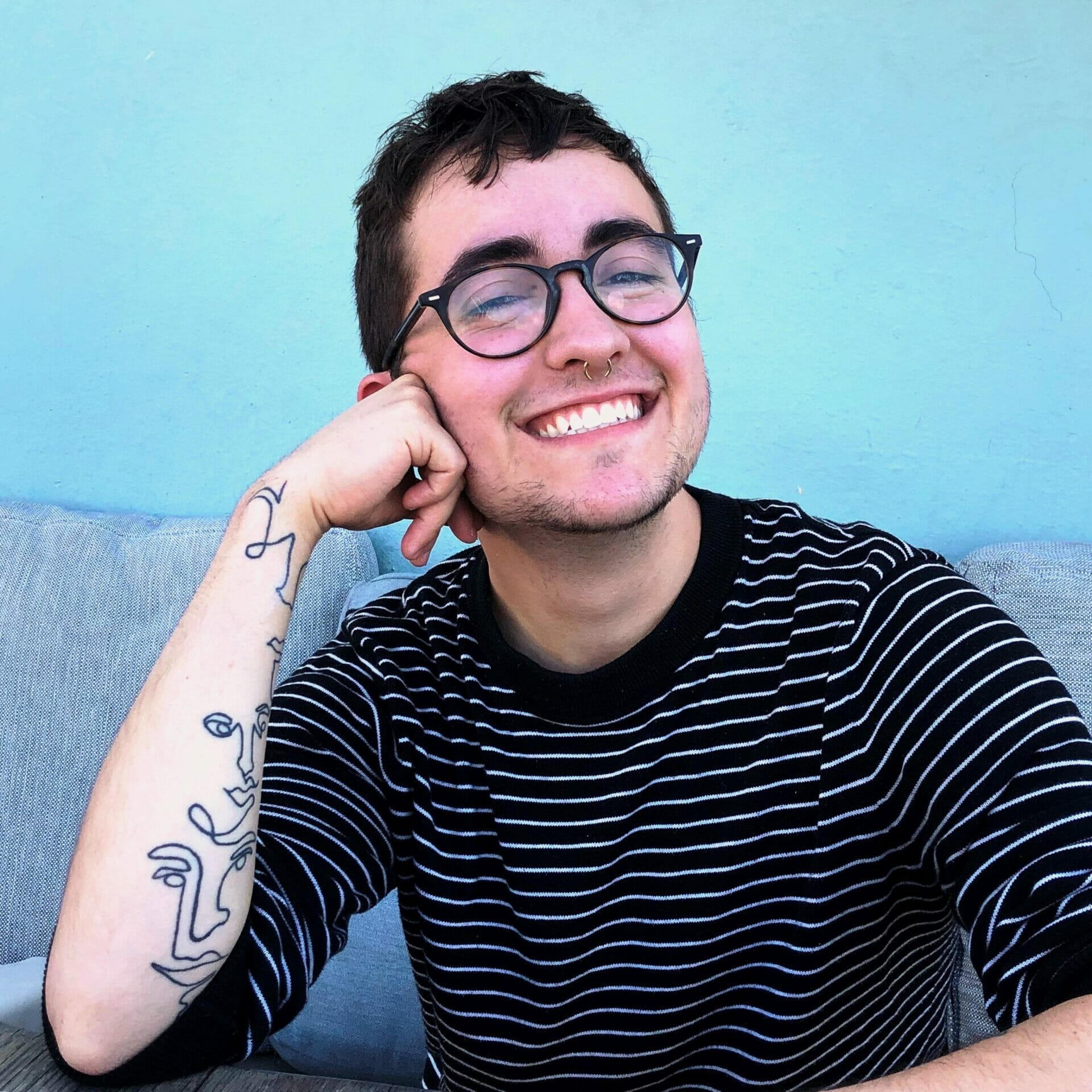In honor of Transgender Awareness Week this past November, GLAAD centered transgender joy, rather than transgender suffering, in their #TransLoveStories social media campaign. Scrolling through Tweets, Instagram stories, and Facebook posts, I couldn’t hold back the enormous smile on my face. These #TransLoveStories included two parents sharing how proud they are of their transgender daughter, a person smiling at themselves in the mirror, a young couple lying on the grass of a crowded park, a tattoo in dedication to a grandmother’s words of acceptance, and so many more.
Trans people and their allies have begun sharing these much needed stories again for Valentine’s Day. Reading the captions and looking at the faces of trans people sharing their happiness, I cannot help but share it with them. I smile, I laugh, and I feel the love they are feeling alongside them, in community with them. I notice, as I sit with these expressions, that I am overcome with relief. This makes me stop and think: What am I feeling relieved of? What weight, exactly, has been lifted by witnessing the expression of a trans man and his husband on his wedding day?
I realize in this moment that I have never been exposed to so much unity between love and transgender existence. I am witnessing the possibility of transgender happiness in many forms – happiness independent from being transgender, happiness in virtue of being transgender, but not happiness in spite of being transgender. This surprised me, as I realized the narrative I had come to expect associated transgender existence with pain and adversity. Not happiness, not joy, and certainly not love.
As a transgender person myself, I have felt this hardship. I have felt the pain of rejection, of dysphoria, of discomfort and alienation. Under one of GLAAD’s posts promoting Transgender Awareness Week, I saw this comment from an Instagram user: “This a woman, not a man. Facts don’t care about your feelings. Artificial hormones turned this woman into a Frankenstein’s monster.” It’s jarring to read in this context of so much positivity, yet, I feel mostly indifference. In many ways, I am more comfortable and familiar with negative comments than I am with positive ones. Unfortunately, seeing these kinds of remarks and opinions are a very real part of what it’s like existing as a transgender person.
It is true that a common source of prejudice and malice is simply ignorance – an unawareness to the pain they are inflicting. Therefore, it makes sense that campaigns to raise awareness often focus on this pain in order to evoke empathy and inspire a change in behavior. However, this is a simplification of trans experience and can result in misguided and condescending interpretations of trans individuals. In my personal experience, people who are educated on transgender existence often approach my identity from a place of objectification and pity, despite their words appearing positive and respectful (such as the common reaction, “You are so brave!”). Unfortunately, this mirrors mainstream representations of what it means to be transgender, a definition rooted in anguish and adversity that is present in legal documents, in the healthcare system, and most notably in the media.
Even in pioneering transgender media representation, movies and television shows like The Danish Girl, Boys Don’t Cry, Degrassi, among others, cast transgender narratives in a disparaging light. These are not just the sources cisgender people have to understand transgender existence, but they’re also the sources transgender people have to understand themselves. The only representation of transgender stories I had were tragedies, and I realized that I saw myself as a tragedy.
Seven years ago he told me that he “wasn’t into transmen” because he was at the time uneducated. Seven years later with open minds and hearts, there we were walking in the orchard right before saying our wedding vows. #translovestories pic.twitter.com/aP46NUBIki
— Kj Nichols (@TbearKj) November 18, 2019
This revelation struck me as I scrolled through the #TransLoveStories hashtag. I was surprised to realize I unconsciously had not included love and joy in my definition of being transgender. Suddenly, #TransLoveStories became more than a hashtag or a social media campaign – it had a radical, healing power. I realized that it was not me who was stuck in the tragedy, but the society that makes it so difficult for transgender people to exist in. It reminded me that for every story of pain in a film synopsis, an article headline, or a medical form, there is a story of joy. How did I know this was true? Because I was looking at the face of a smiling trans man on his wedding day. I was looking at trans people all over the world being kissed, hugged, and appreciated. Despite dominant representations, #TransLoveStories serve as evidence that:
Transgender people are worthy and capable of being loved.
Transgender people are worthy and capable of loving themselves.
Transgender people are worthy and capable of experiencing joy and celebration.
 Alex Escaja is a GLAAD Campus Ambassador and sophomore at the University of Vermont studying Film and Gender Studies. Alex is an award-winning filmmaker, an advocate for the LGBTQ community. He is the President of UVM Film Club and the Activism Committee Chair of the Queer Student Union.
Alex Escaja is a GLAAD Campus Ambassador and sophomore at the University of Vermont studying Film and Gender Studies. Alex is an award-winning filmmaker, an advocate for the LGBTQ community. He is the President of UVM Film Club and the Activism Committee Chair of the Queer Student Union.













